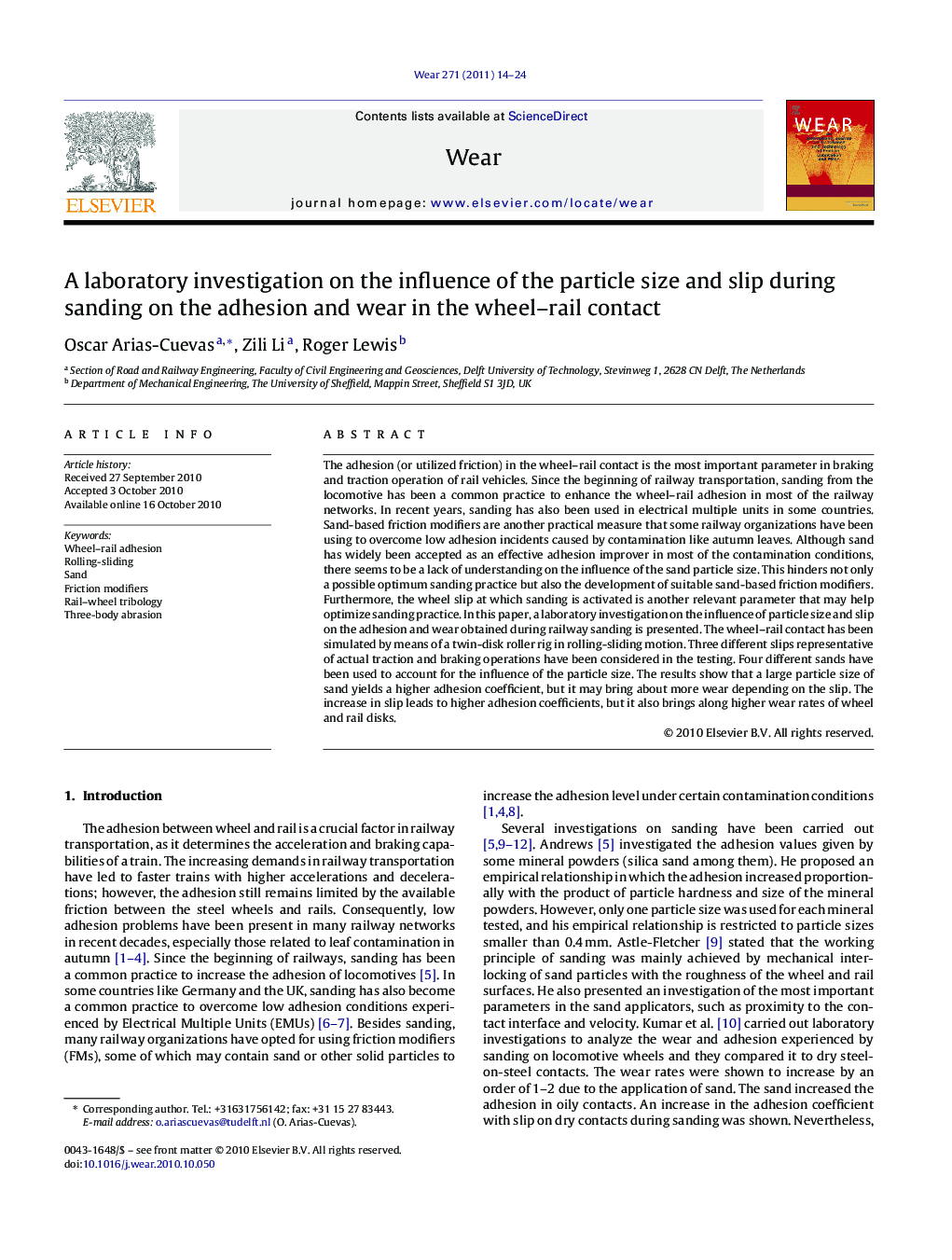| Article ID | Journal | Published Year | Pages | File Type |
|---|---|---|---|---|
| 618250 | Wear | 2011 | 11 Pages |
The adhesion (or utilized friction) in the wheel–rail contact is the most important parameter in braking and traction operation of rail vehicles. Since the beginning of railway transportation, sanding from the locomotive has been a common practice to enhance the wheel–rail adhesion in most of the railway networks. In recent years, sanding has also been used in electrical multiple units in some countries. Sand-based friction modifiers are another practical measure that some railway organizations have been using to overcome low adhesion incidents caused by contamination like autumn leaves. Although sand has widely been accepted as an effective adhesion improver in most of the contamination conditions, there seems to be a lack of understanding on the influence of the sand particle size. This hinders not only a possible optimum sanding practice but also the development of suitable sand-based friction modifiers. Furthermore, the wheel slip at which sanding is activated is another relevant parameter that may help optimize sanding practice. In this paper, a laboratory investigation on the influence of particle size and slip on the adhesion and wear obtained during railway sanding is presented. The wheel–rail contact has been simulated by means of a twin-disk roller rig in rolling-sliding motion. Three different slips representative of actual traction and braking operations have been considered in the testing. Four different sands have been used to account for the influence of the particle size. The results show that a large particle size of sand yields a higher adhesion coefficient, but it may bring about more wear depending on the slip. The increase in slip leads to higher adhesion coefficients, but it also brings along higher wear rates of wheel and rail disks.
